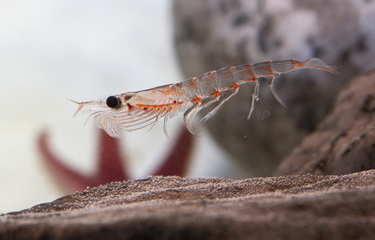Future of Fish Feed launches krill replacement challenge

The Future of Fish Feed, also referred to as F3, has launched a new krill replacement challenge, the organization’s latest aquaculture feed contest.
F3 has run an F3 Fish-Free Feed Challenge since 2015, challenging participants to innovate and sell fish-free feed to the aquaculture industry. Winners of the contest receive a monetary reward of up to USD 200,000 (EUR 183,000) with past winners including Veramaris, Star Milling Co., Empagran, and more.
Now, the organization is launching the F3 Krill Replacement Challenge to spark innovation for a substitute for krill in aquaculture feeds.
“We are upping the stakes in our fourth challenge to the aquaculture industry to replace another critical marine animal ingredient in fish feed,” Future of Fish Feed Chair and University of Arizona Professor Kevin Fitzsimmons said. “We invite innovators from the feed supplement, feed ingredient, and synthetic biology sectors to join us in advancing more sustainable aquaculture practices that will improve food security globally.”
The new contest, F3 said, is inviting up to 10 companies to register by 31 August for a chance to win the USD 100,000 (EUR 92,000) grand prize. The prize will be given to the company with a product that, via feed trails on Atlantic salmon, showcases the best growth, feed consumption, and survival during a 12-week period. Atlantic salmon, F3 said, was chosen both because it is a widely consumed fish and because the species is “known by farmers to be finicky eaters.”
The new krill replacement challenge is the fourth contest that F3 has hosted, and according to the organization was spurred on by declines in krill populations, coupled with steady increases in krill harvests over the last decade.
Krill is mainly harvested in the Antarctic, and is managed by the Commission for the Conservation of Antarctic Marine Living Resources (CCAMLR). The combined catch limit for areas managed by the CCAMLR is currently 620,000 metric tons (MT), and according to the latest available CCAMLR data harvesters caught 371,526 MT of krill in 2021.
Chinese companies have been pushing to increase krill production in recent years – at one point 15 different Chinese companies had plans to build krill trawlers. While some financing problems have slowed China’s planned expansion into the krill fishery, krill-oil-based health products in China have seen great success and Lysaker, Norway-based biotech and krill-harvesting company Aker BioMarine posted a positive performance for 2022 on the back of improved krill harvests.
Aker BioMarine currently accounts for roughly 70 percent of global krill catch, and the company saw an “all-time high production record” in 2022, according to Aker BioMarine CEO Matts Johansen.
Photo courtesy of Tarpan/Shutterstock






Share